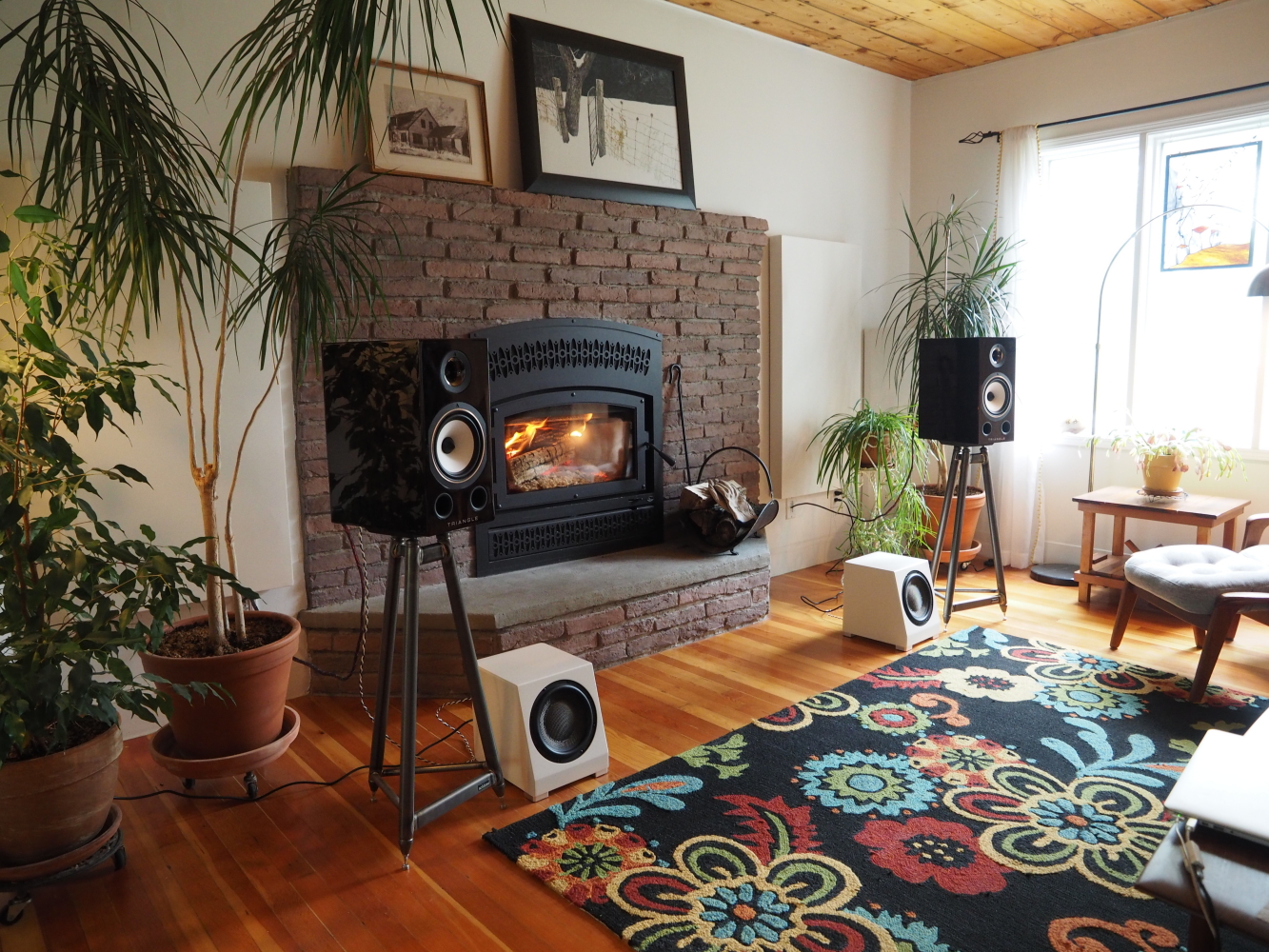Two Totem Kin subs in use here. I have had a single REL and then a single Velodyne in the past. The REL had speed, the Velodyne had a microphone and DSP, but neither one of those blended as well as a pair of Totems. Mind you, the Totems don't go overly deep, rated to 29 hz in-room, but they fill in the bottom of a pair of Triangle Cometes very nicely. I have one place directly beside each speaker.
The Totem Kin have no remote control, but I have them hooked up to "speaker B" of my integrated amp. This allows me to turn the subs on or off with the integrated's remote. I'll turn them off once in a while to check the effect, but I always prefer the subs active.
I've also tried main speakers which go deeper in the bass than the average standpoint, but because of my listening seat being hard up against the back wall, I tend to get bloated bass. Smaller speakers combined with powered subs, allows me the flexibility to control the bass levels and avoid bloat.


